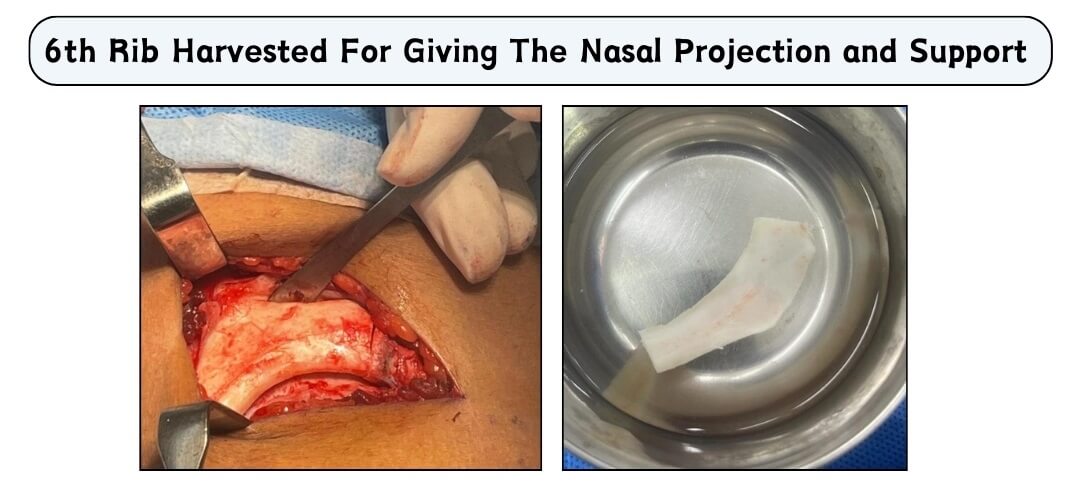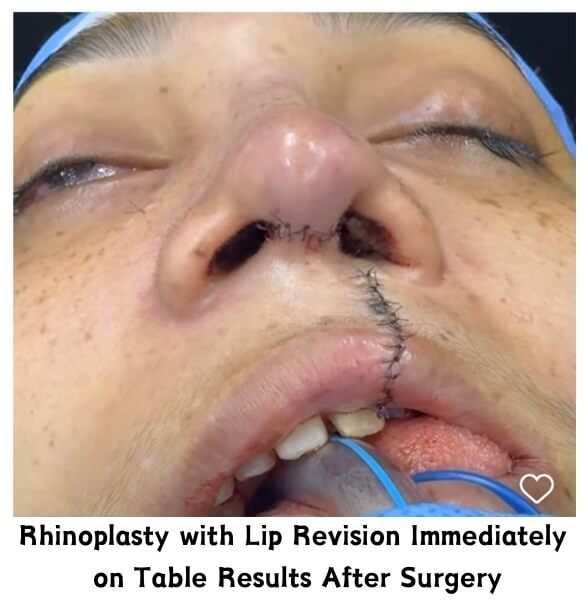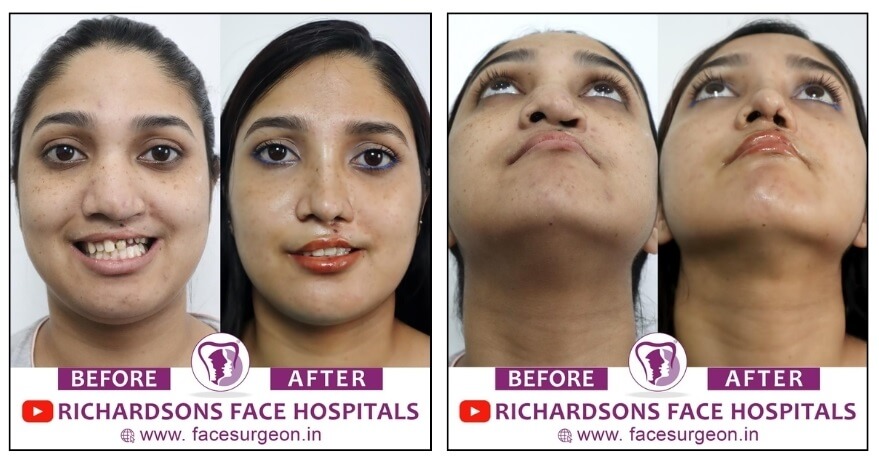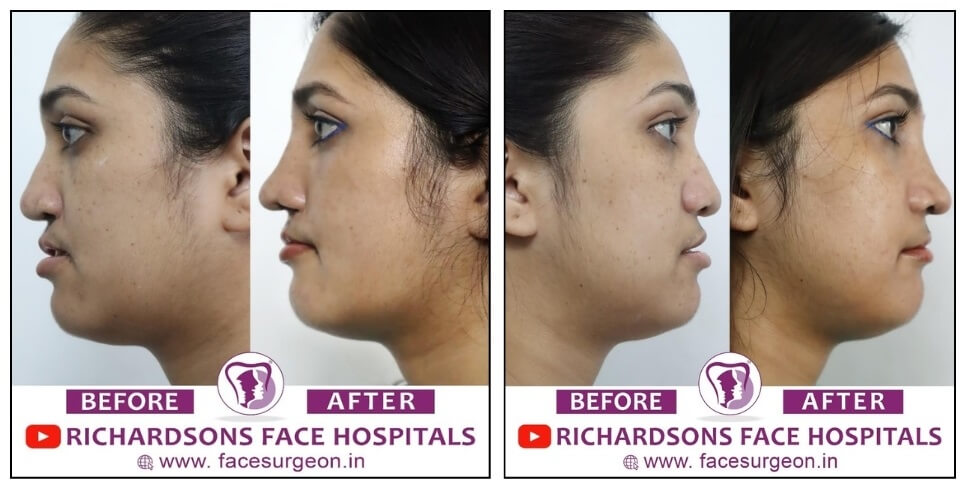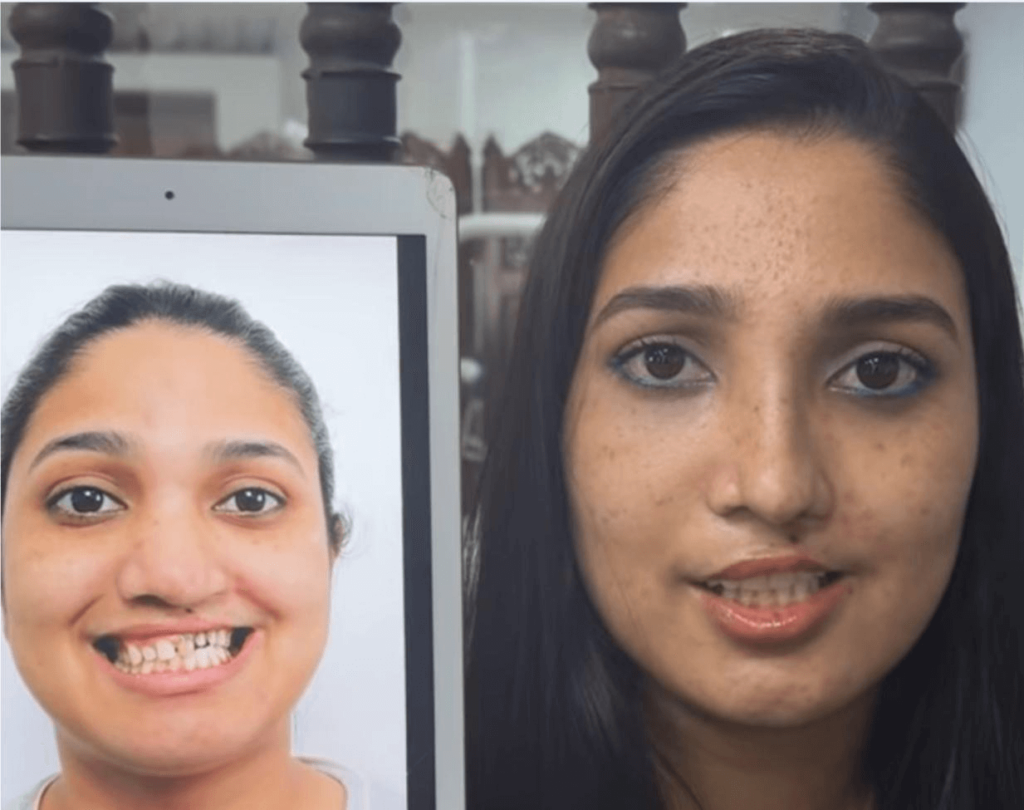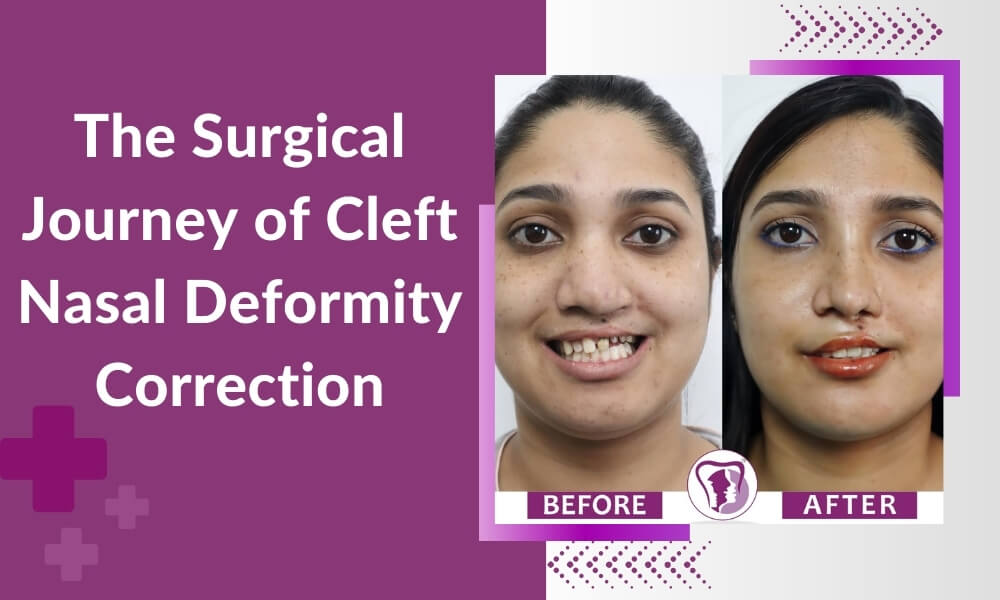The Surgical Journey of Cleft Nasal Deformity Correction
Living with a cleft deformity can pose significant challenges, both functionally and aesthetically.
In this blog, we present you the inspiring journey of a patient who had undergone previous cleft lip and palate surgeries elsewhere in the country but still continued to face issues with Cleft Nasal Deformity. Seeking a solution, she turned to the expertise of Dr. Sunil Richardson, renowned for his proficiency in Nose corrections with Rhinoplasty.
Early Surgeries and Lingering Nasal Deformities
The patient, having undergone cleft lip surgery at the tender age of three months and palate repair at nine months elsewhere in the country still battled the residual nose asymmetry because of the cleft condition. Despite the initial corrective surgeries, the patient experienced difficulties in both nasal breathing and speech function as well as appearance, prompting the search for a comprehensive solution.
Planning of Open Structure Rhinoplasty with Lip Revision
In her initial consultation at Richardson’s hospital, Dr. Sunil with his thorough understanding of the intricacies of cleft deformities and the challenges associated with nasal reconstruction set the plan for Cleft rhinoplasty surgery with rib grafting and Lip Revision. Also, CBCT scans were done for her to look at the bony framework of the nose before the surgical journey was carried out. Also, that gave insight into the nasal septum deviation which was the root cause leading to breathing difficulties and recurrent nose blockage.
She had multiple facial scars and fibrosis over the area of her left upper lip and philtrum from her previous surgeries which also Dr. Sunil planned to correct in the same operation along with addressing the nose. Surgically meticulously Lip revision was done along with Rhinoplasty and suturing was done in such a manner that the scar would be inconspicuous just within a few days after surgery.
12 Days to A New Look
The patient witnessed a remarkable transformation immediately after the surgery. The open structure rhinoplasty, coupled with rib graft harvest and as well as dental rehabilitation for her carious/ decayed tooth was done while she was admitted to the hospital during her recovery period and this not only addressed the cleft nasal deformity but also imparted a newfound confidence and vitality. The success of the intervention extended beyond aesthetics, positively impacting the patient’s overall well-being, and her post-surgical photographs say all.
Anatomical Challenges and Complexities of Cleft Nasal Deformities
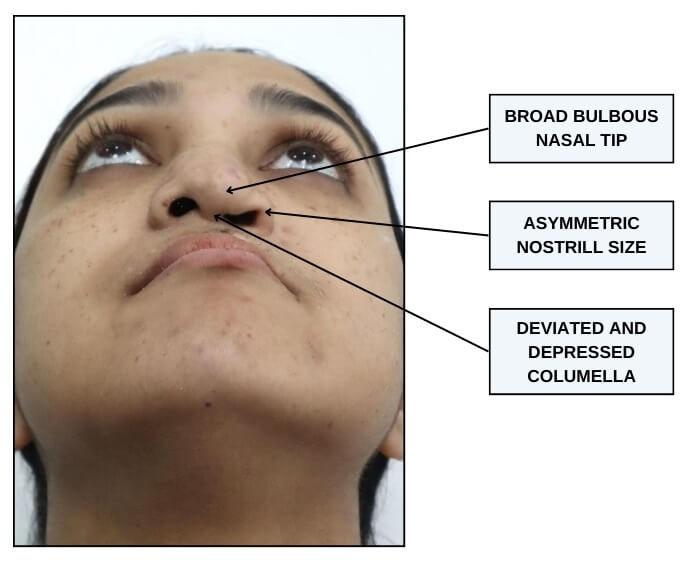 |
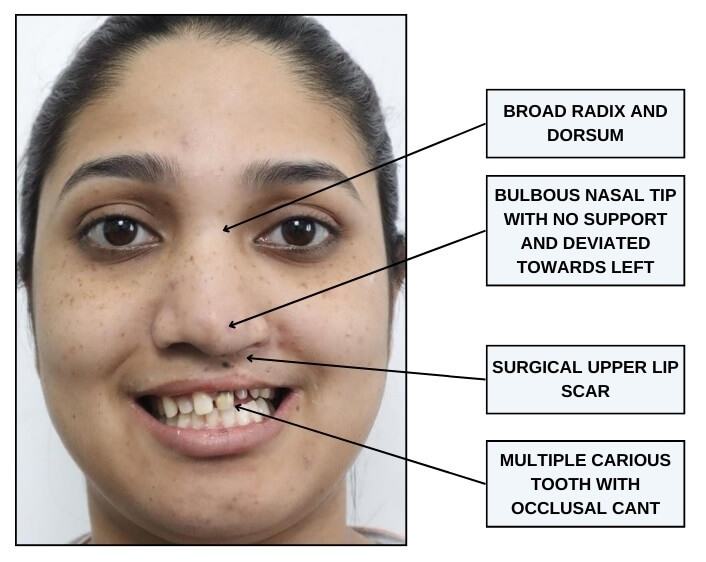 |
Anatomic Complexities
Cleft rhinoplasties involve addressing intricate anatomical abnormalities resulting from cleft lip and palate. Patients have altered nasal structures, deviated septum, and asymmetrical cartilage, requiring meticulous planning and precise execution.
Functional Breathing Issues
Beyond cosmetic outcomes, preserving or restoring nasal function is paramount. Addressing issues like nasal airway obstruction and velopharyngeal insufficiency is required. Correction of a deviated septum is addressed which improves the breathing post surgery.
Previous Surgical Scars and Fibrosis
Cleft rhinoplasty involves dealing with scar tissue from previous cleft lip repairs. Minimizing visible scarring while achieving structural integrity is a delicate balance that requires advanced surgical techniques careful incision planning and specialized suturing techniques.
Growth and Development
Cleft lip and palate conditions interfere with the normal maxillary growth and can result in underdeveloped or deficient maxillary growth which required to be surgically corrected or addressed.
Association of Cleft Deformities and Nasal Abnormalities
Cleft deformities not only impact the orofacial region but often extend to involve nasal structures, giving rise to cleft nasal deformities.
Cleft Patient Rhinoplasty Issues
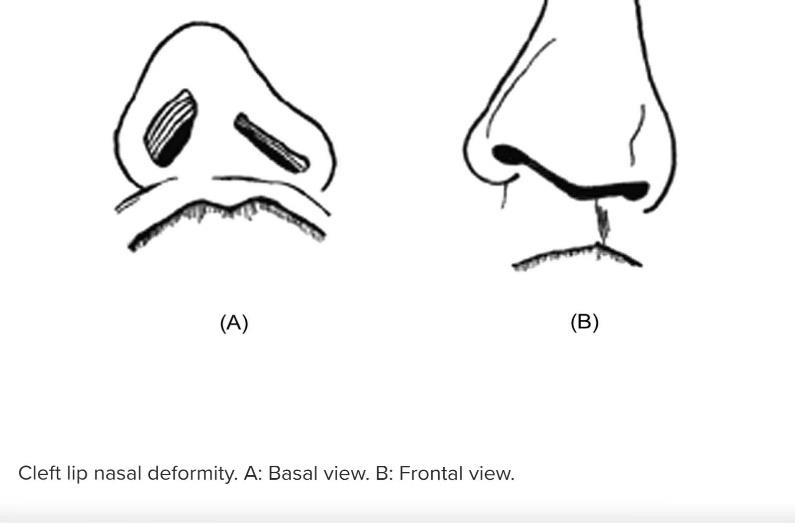
- Asymmetry and nasal dorsum deviation.
- Nasal tip deviation.
- Nasal septum deviation.
- Lack of nasal tip support.
- Previous surgical scars.
- Maxillary hypoplasia/underdeveloped maxilla.
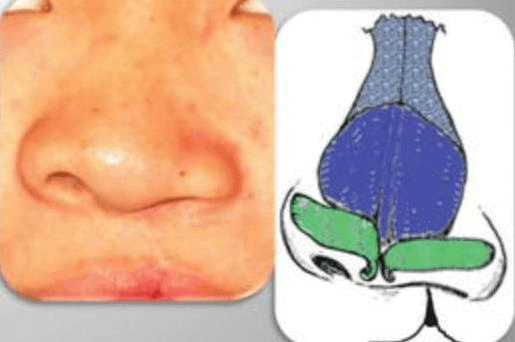
- Deviated Nasal septum due to muscle pull.
- Nasal tip deviation.
- Asymmetric and flattened lower lateral cartilages on the affected side.
- Deviated Columella.
